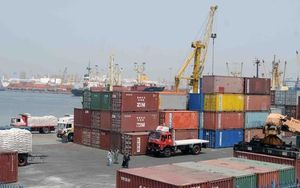Once a dominant player in the tech industry, Intel (INTC) has recently faced significant challenges, with its stock price falling below $20 per share—the lowest level since 2012. This steep decline was triggered by a staggering 27% drop in stock value on August 1, 2024, following a disappointing earnings report. Since then, Intel has struggled to regain any positive momentum, grappling with various factors that threaten its recovery.
In his year-end shareholder letter for 2024, new CEO Lip-Bu Tan candidly acknowledged the company's shortcomings, stating, "Intel’s future success requires an honest assessment of past performance. As I look back on the company’s 2024 results, there is no sugarcoating the fact that we fell short of your expectations. There are many reasons for this, but there are no excuses." Tan emphasized his focus on solutions aimed at enhancing the company's long-term performance and delivering value to shareholders.
Intel is currently implementing a $10 billion cost action plan that includes a 15% reduction in workforce, cuts in operating expenses and capital expenditures, and the simplification of its portfolio. Despite these challenges, the company has reported signs of progress in its most recent quarterly results, which exceeded revenue, gross margin, and earnings per share (EPS) guidance. Tan noted, "While our performance is nowhere near where I believe it ultimately can and must be, this gives us a lot to build on in 2025 as we continue to drive a disciplined focus on execution and value creation."
As investors look ahead, the options market indicates an expected stock price range of +/- $1.54 based on this week's implied volatility, which suggests a potential 7% movement in the stock price. Looking further into the June expiration cycle, the implied stock price range widens to +/- $3.25. This week's developments are crucial, as they could significantly impact the expected price range over the coming months.
Many investors are eagerly anticipating the Intel Foundry event scheduled for April 29, 2025, which is expected to provide insights into the semiconductor manufacturing services that Intel offers. Bullish traders are hoping that positive news from this event could help boost the stock price. Conversely, bearish investors are concerned that weak earnings results and the looming impact of tariffs could lead to further declines in stock value.
In a surprising twist, on April 22, 2025, Intel's stock jumped nearly 3.5% during afternoon trading. Mizuho Securities analyst Jordan Klein commented on the situation, stating that "numbers really do not matter" due to the significant dampening effects of tariffs on PC demand. While PCs have won an exemption from the 145% reciprocal tariff imposed on Chinese imports, uncertainty remains regarding which consumer electronics might still be affected.
Cantor Fitzgerald analyst C.J. Muse, who holds a five-star ranking on TipRanks, has suggested that Intel may need to withdraw its full-year guidance altogether. This uncertainty has led many to look toward the upcoming Foundry Day event for a clearer outlook on the company's future.
Meanwhile, some good news has emerged regarding Intel's Core Ultra 9 285K processor, part of the Arrow Lake line. Recent reports indicate that the processor is showing promising improvements on Linux, with benchmark testing revealing significant enhancements over the past six months. These advancements are largely attributed to kernel optimizations that have positively influenced performance.
As the market continues to evaluate Intel's prospects, analysts currently hold a consensus rating of "Hold" on INTC stock, with one Buy, 26 Holds, and four Sells assigned over the past three months. Following a staggering 42.53% loss in its share price over the last year, the average price target for INTC stands at $22.44 per share, suggesting a potential upside of 14.84%.
Looking ahead, the upcoming earnings report and the Foundry Day event are pivotal moments for Intel. Investors are keen to see whether the company can effectively navigate its challenges and capitalize on its opportunities. As the tech landscape continues to evolve, the pressure is on Intel to demonstrate its ability to adapt and thrive in a competitive environment.
In summary, Intel's journey is fraught with obstacles, yet signs of resilience and potential recovery are beginning to emerge. The company's efforts to streamline operations and invest in future growth could pave the way for a turnaround, but the looming threats of tariffs and market competition remain significant hurdles. As stakeholders await the next developments, the focus will be on whether Intel can reclaim its status as a leader in the semiconductor industry.




